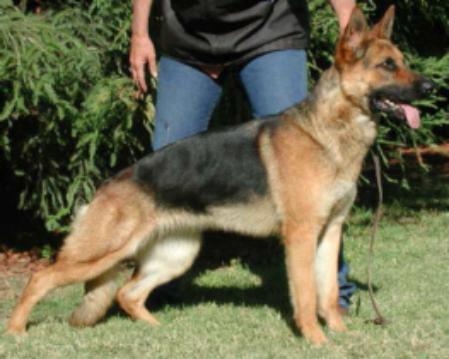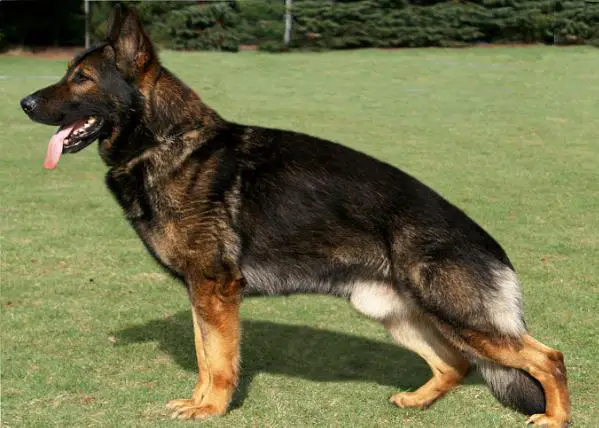
This is a placeholder text
Group text
by fawndallas on 26 November 2012 - 14:11
In my limited experence, the roach back was the give away to a SL and the straighter back was a WL. I think there is more, as someone indicated that Rose and her pups were SL and I do not see the roach back (maybe I am blind though).
Could also be that "look in their eye." I have looked at the different puppy pictures posted here and I agree that what many indicate as a WL has that look that simply says "I am looking for trouble." This throws me off too, as all GSDs generally come from the same beginnings and genetics don't normally produce for a "look in the eye."
by Aadilah07 on 26 November 2012 - 15:11
There are tons of info on the web, go and do some homework...
You posted "smart comments" on the Czech GSD Forum but you don't even know the difference bet. the show and sport/workline GSD's....
by fawndallas on 26 November 2012 - 15:11
Why would this be looking for trouble? For the people on this forum that I respect their comments (both SL and WL people), they know I am asking an honest layman's question. Everyone else, well, I know how to ignore unuseful information.
I can relate more to the WL. A dog with that purpose makes more sense to me rather than a SL. Not to say SL are negative; I just have a harder time relating.
There are more people like me who would not know a SL / WL from a hole in the ground; at least at the visual level. From what I have learned so far, if I intended to get another GSD in 5 - 7 years, I better start researching so I make my own decision without fully relying on others to "tell me" what dog to get.
Anyone can feed me a line. At this point, other than asking around, I will not know the difference. Again, there are a lot of people like me.
~~~~~~~~~~~~~~~~~~````
ADDED:
Once I see a dog in action, yes, I have learned enough to tell the difference. From a photo, no, I still do not quite "get" what I am looking for.
by VKGSDs on 26 November 2012 - 15:11
The easiest visual difference is color. Most WGSL are black and red. There are some black/red or black/tan WL but typically they are more tan than red and/or have a tighter coat. This is just a generalization though, as there are also sable WGSL and Am line SL come in every color (sable, black, bi, blanket, black/tan....).
I think the problem is that you are asking for generlizations that just perpetuate...well, generalizations. It would be better to learn the pedigrees, learn what dogs have been successful and why and how they have impacted the breed (or not) than just learn more generalizations.
Just saying this as someone who owns, trains, titles, and shows BOTH working and show lines (my dogs all do the same things, I don't care what color they are or what "type" they look like).
by fawndallas on 26 November 2012 - 15:11
by mollyandjack on 26 November 2012 - 15:11
http://www.pedigreedatabase.com/dog.html?id=563607

Going by structure, you might think this guy is a SL (though I think the photo has been altered??):
http://www.pedigreedatabase.com/dog.html?id=443289

by VKGSDs on 26 November 2012 - 15:11
I cannot speak to the generalization of "what they are used for" because as I said, all my dogs whether working or show or combination ALL are trained in several sports and working disciplines *and* they are shown. I like to do Schutzhund, SDA protection, flyball, agility, dock diving, lure coursing, UKC conformation, and SV conformation and I do all these things with each GSD regardless of his color or type. Either I like the dog or I don't. If a dog has bad structure or a weak temperament I won't own it.
A great example posted above.
by fawndallas on 26 November 2012 - 16:11
So my best starting point is to go to as many shows / trials as I can. Learn to "see" what I like/ don't like physically and temperament wise; get dog names; and research/watch the line from there.
Thank you both.
by VKGSDs on 26 November 2012 - 16:11
by fawndallas on 26 November 2012 - 16:11
Contact information Disclaimer Privacy Statement Copyright Information Terms of Service Cookie policy ↑ Back to top




